Ever wonder if your remote employees are actually working or just online? You’re not alone.
Figuring out how to monitor employees working from home without micromanaging can be challenging.
The key is choosing the right work-from-home monitoring software or WFH time tracking tools that make visibility into an employees’ computer feel supportive, not intrusive.
With the right setup, you can track productivity while still giving employees the independence they need to perform their best.
According to The New York Post, “Working from home can be dangerous to your health and stifle innovation” because many remote employees don’t have the right office setups and miss out on spontaneous team interactions.
Without structure, distractions pile up, and productivity can suffer..
So, how can you effectively monitor employees working from home without making them feel like they’re being watched?
The key is using the right tools, setting clear expectations, and building trust.
However, before businesses can effectively monitor remote employees, it’s important to understand what working from home really means.
In this article, you’ll learn how to effectively monitor employees working from home, striking a balance between visibility, trust, and productivity through practical steps, proven tools, and privacy-first strategies.
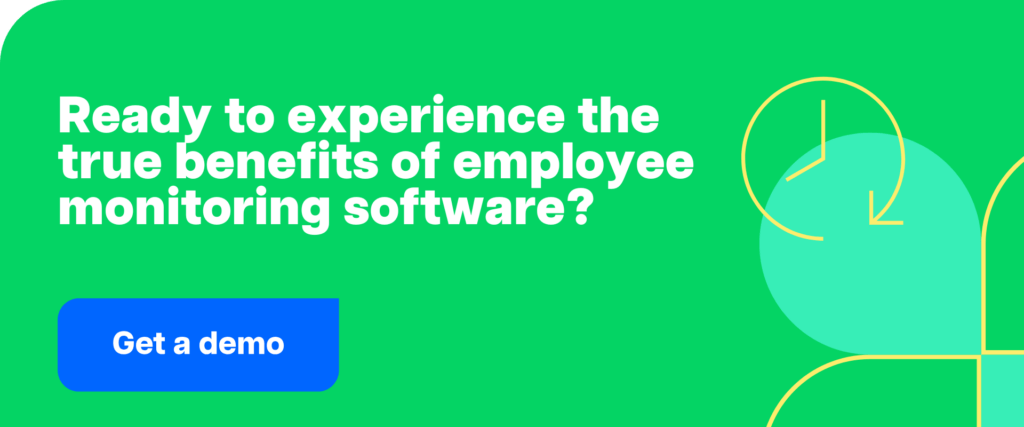
Table of contents
Working from home: How remote work has evolved
Working from home, also known as remote work, is an arrangement where employees perform their duties outside of a traditional office. This setup allows individuals to complete tasks from home, coworking spaces, or any location with an internet connection.
The shift to remote work accelerated during the pandemic when businesses had to adapt quickly. Companies implemented work-from-home policies to ensure continuity while keeping employees safe.
What started as a necessity has become a preferred option for many workers and organizations.
While some businesses continue with complete remote work, others have adopted a hybrid work model.
Hybrid work combines remote and in-office work, providing employees with flexibility while maintaining a physical presence.
This approach allows teams to collaborate in person when necessary while still benefiting from the independence of working remotely.
When you manage a remote or hybrid team, you need more than trust. You need visibility that helps everyone perform at their best.
Remote employee monitoring software, also known as secure employee tracking or a productivity analytics platform, provides you with real-time data on how work is done, without disrupting your team’s workflow.
It will help you track employee activity, understand how tasks are completed, maintain accountability, and ensure that employees stay focused even when they are not physically present.
As remote work becomes more common, companies need ways to monitor progress without disrupting workflows. Unlike traditional supervision, computer monitoring provides data-driven insights rather than relying on direct observation.
They promote transparency, improve communication, and support employee performance when used correctly.
Rather than focusing on surveillance, effective monitoring helps businesses create a productive and structured work environment.
The right approach ensures employees have the necessary flexibility while meeting company expectations.
Proven methods to monitor work-from-home employee productivity
If you want to improve accountability without crossing into micromanagement, use GDPR-compliant software for remote teams that tracks productivity transparently.
The right setup helps you measure performance and maintain trust across your remote workforce..
The key is to track progress without falling into micromanagement.
Here’s how to effectively monitor your remote workforce while maintaining trust.
1. Set clear expectations for work hours and productivity
Some remote workers struggle to structure their workday without clear guidelines, while others overwork and risk burnout. Setting clear productivity metrics and expectations is the best way to support employees working from home.
Instead of assuming employees know what’s required, spell it out:
- Define core work hours, deadlines, and performance expectations across different time zones, so everyone understands when to be available and what they need to accomplish.
- Use employee monitoring software to track work hours and see when employees clock in without unnecessary check-ins or micromanagement.
- Encourage transparency by regularly discussing employee performance, helping to align individual efforts with company goals.
According to Laura Spawn, Virtual Vocations, Inc., “Establishing clear expectations and performance metrics tailored for a remote work setting is key to an environment where both managers and employees feel that they are efficient and productive.” When employees understand what success looks like, they can manage their work time effectively, enhancing team productivity and reducing stress.
2. Use employee monitoring tools that boost productivity
Modern work-from-home monitoring software gives managers real-time visibility while allowing remote workers to stay productive without feeling micromanaged. These WFH time tracking tools provide dashboards that translate employee activity into actionable insights.
The right tools don’t just track hours. They also help teams work smarter.
Instead of simply monitoring activity, the best employee monitoring tools focus on boosting efficiency:
- Time-tracking tools are a key part of productivity monitoring as they automatically record work hours, log breaks, and prevent burnout.
- Screenshots and activity monitoring provide a high-level view of employee engagement without invading privacy.
- Productivity tracking dashboards offer insights into team productivity, helping managers spot inefficiencies and improve performance.
Rather than guessing whether employees are working, remote employee monitoring software tracks user activity to ensure accountability while maintaining flexibility. These tools support business goals and a healthier remote work environment when used correctly.
3. Focus on results, not just activity
Think about this: Would you rather track how long an employee sits at their desk or how much work they actually complete? Focusing on results over screen time is the smarter choice.
- Use employee monitoring software to track employee time, project completion rates, and key metrics.
- Identify workflow inefficiencies by analyzing app usage on an employee’s computer and minimizing distractions from social media or other non-work sites.
- Set up real-time alerts and notifications to help remote workers stay on track without unnecessary surveillance.
In Time Doctor’s guide to results-only work environments, we share that when employees meet expectations and deliver quality outcomes, it matters less when or where the work happens.f work.
4. Stay connected with check-ins and real-time collaboration
Remote workers often struggle with feeling disconnected. Without in-person conversations, staying aligned can be challenging. How can you maintain strong communication without overwhelming your team?
- Schedule daily or weekly check-ins using Slack, Zoom, or Microsoft Teams to maintain regular contact.
- Use project management tools like Trello, Asana, or Monday.com to assign tasks and track progress.
- Provide real-time updates with dashboards so everyone stays informed.
The right employee monitoring software helps teams stay connected and productive. Setting up structured check-ins and using the right tools creates a work environment where remote employees feel supported, not isolated.roductive. Setting up structured check-ins and using the right tools creates a work environment where remote employees feel supported, not isolated.
5. Protect data security and employee privacy
The most effective work-from-home monitoring software also acts as a secure employee tracking system, helping you stay compliant with GDPR and other data protection laws.
If you manage teams in banking, finance, or healthcare, this level of compliance gives you peace of mind that sensitive information is always protected.
- Healthcare compliance tip: If you oversee healthcare teams, choose monitoring software with HIPAA-level data protection to keep patient and company information secure while maintaining full compliance.
- For finance teams: Look for tools with IP restriction controls and secure login audit trails to safeguard sensitive transactions and meet strict industry regulations.
Following GDPR and other data security regulations keeps your business compliant.
Monitoring work activities on an employee’s computer without collecting personal data helps you build trust with your team and minimize security risks related to unauthorized data access.
By setting clear boundaries, you can ensure tracking stays within work hours while respecting privacy.
When you track employee performance ethically, you strengthen accountability while maintaining a secure, compliant, and transparent work environment.
6. Support employee well-being and engagement
Remote work can blur the line between work and personal life, often leading to burnout or disengagement from both. Keeping employees productive requires more than monitoring. It also means supporting their well-being.
When employees feel supported, they are more likely to stay engaged and perform at their best. As a result, a balanced and motivated workforce leads to higher productivity without the need for excessive oversight.r excessive oversight.

How does employee monitoring software benefit businesses?
Employee monitoring software provides businesses with valuable insights into productivity, work habits, and overall performance metrics. It helps companies ensure accountability while supporting remote teams in achieving their goals.
By using productivity analytics platforms and secure employee tracking systems, you can gain measurable insight into team performance while protecting employee privacy.
This visibility helps you make smarter decisions, coach your team, and build accountability across your remote workforce.
Businesses benefit from monitoring software in several ways:
Improved productivity
Tracking work hours and employee activity helps identify time-wasting behaviors and optimize workflows.
Better project management
Managers can track task completion rates, ensure deadlines are met, and allocate resources more effectively.
Data security and compliance
Monitoring tools help prevent unauthorized access, detect suspicious activity, and maintain compliance with GDPR and other regulations.
Accurate performance evaluations
Real-time tracking provides objective data for measuring the team’s performance, helping businesses recognize top performers and address areas for improvement.
Effective employee monitoring software does more than track work. It enhances collaboration, streamlines operations, and ensures remote teams stay engaged and productive.
When you’re choosing the right work-from-home monitoring software, look for tools that serve as both a time tracking tool and a productivity analytics platform.
These features help you optimize workflows, prevent burnout, and stay compliant with GDPR and other security standards.
Effective management software should provide real-time insights while maintaining transparency and trust.
Here are the essential features to look for:
1. Automated time tracking
Time tracking software accurately records work hours and activity without requiring manual input. Employees can track their time effortlessly while managers gain visibility into task duration and productivity.
2. Productivity insights and reports
Generates detailed performance metrics, showing which tasks take the most time and identifying patterns in employee activity. Some tools, like Time Doctor, even use benchmark AI to compare performance data across teams, helping you improve workflows and optimize overall efficiency.
3. Distraction alerts
Reminds employees to stay focused if idle time or unproductive app usage is detected. This feature helps remote teams minimize distractions and improve engagement.
4. Task and project management integration
Syncs with project management tools allow businesses to assign tasks, track progress, and meet deadlines, ensuring seamless collaboration across remote teams.
5. Website and application monitoring
Tracks which apps and websites employees use during work hours, helping businesses understand productivity levels without unnecessary surveillance.
- Banking and finance insight: When handling financial data, make sure your work-from-home monitoring software includes detailed access logs and two-factor authentication. This helps prevent unauthorized access and maintains data integrity across your organization.
- Healthcare insight: If your team works with electronic medical records or other sensitive patient data, choose software that supports HIPAA-compliant data handling and restricted screen access to protect confidential information.
6. Screenshots and activity tracking
Provides an optional screenshot capture to verify task completion. This helps maintain accountability while ensuring that privacy settings can be customized based on company policies.
7. Payroll and billing integration
Automates payroll calculations based on logged work hours, making it easier for businesses to compensate employees accurately. This is especially useful for teams with freelancers or contractors.
8. Real-time tracking and customizable reports
Provides real-time visibility into workloads, enabling managers to identify bottlenecks and adjust priorities accordingly. You can also generate unusual activity reports to detect anomalies such as long idle periods or unapproved app usage, helping you analyze trends and make smarter, faster decisions.
9. Privacy-focused monitoring
Balances employee performance tracking with ethical data collection. Employees can view their activity data, ensuring transparency and trust between teams and management.Selecting an employee monitoring tool with these features helps businesses maintain productivity, streamline operations, and support remote teams without micromanaging.

If you manage distributed or hybrid teams, you need a secure employee tracking and productivity analytics solution that keeps your data safe, your teams focused, and your pricing predictable.
A GDPR-compliant platform for remote teams, such as Time Doctor, combines time tracking, attendance, and workforce analytics in one workspace, providing you with full visibility without micromanaging.
Here are the essential tools for monitoring and managing employees working from home:
1. Time Doctor – Best for employee monitoring, time tracking, and workforce management
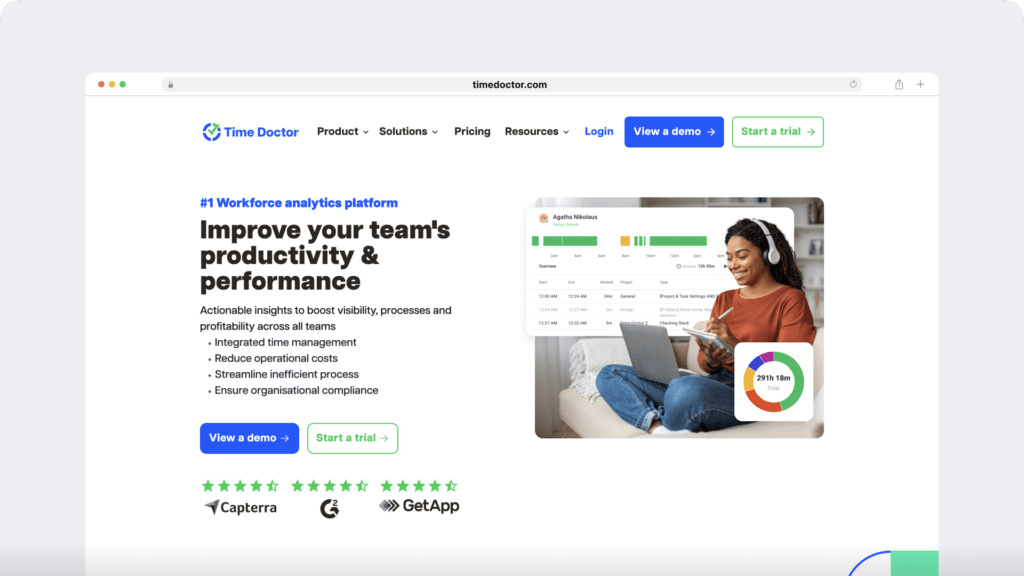
Using a monitoring system to track work hours and employee productivity is key to managing remote teams.
Time Doctor provides real-time visibility with a powerful built-in time tracker that shows how work is done, allowing you to coach with trust, not control, and help teams stay focused across remote, hybrid, and in-office settings.
It turns activity into actionable insights on focus, workload, and outcomes, and it connects with payroll, project management, and communication tools to keep your workflows simple.
Intuitive onboarding and 24/7 multilingual support help your organization adopt quickly with low lift for IT.
Compliance-ready across industries: Whether you lead teams in banking, finance, or healthcare, Time Doctor supports HIPAA-aligned privacy controls, audit-friendly reporting, and GDPR-compliant monitoring, which makes it easier to manage distributed teams while keeping sensitive information protected.
2. Monday.com – Best for task and project management
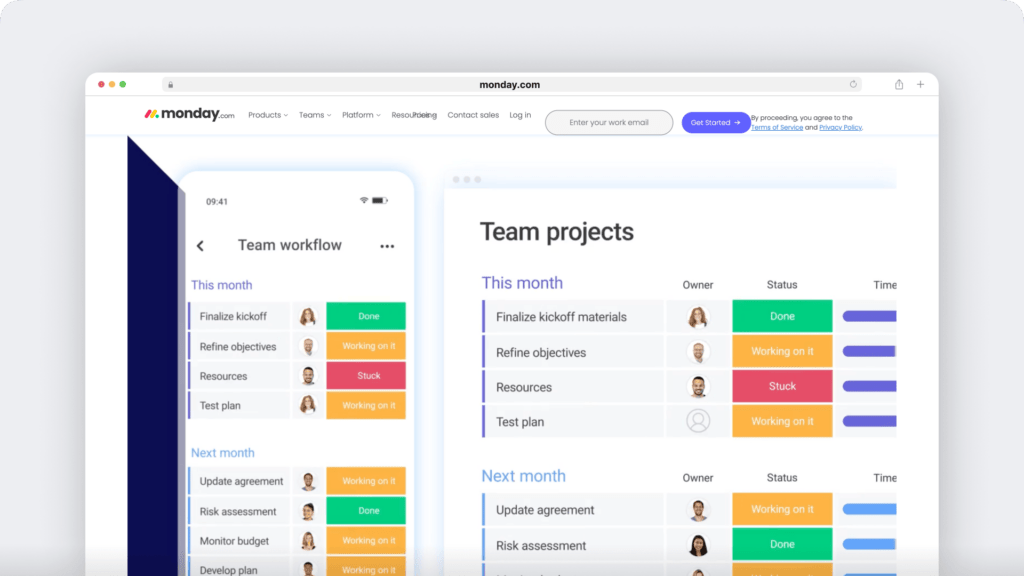
Without clear task assignments, remote teams can struggle to stay on track. Monday.com offers customizable dashboards and automated workflows to help businesses manage tasks, set deadlines, and track project progress.
3. Slack – Best for instant communication and team collaboration
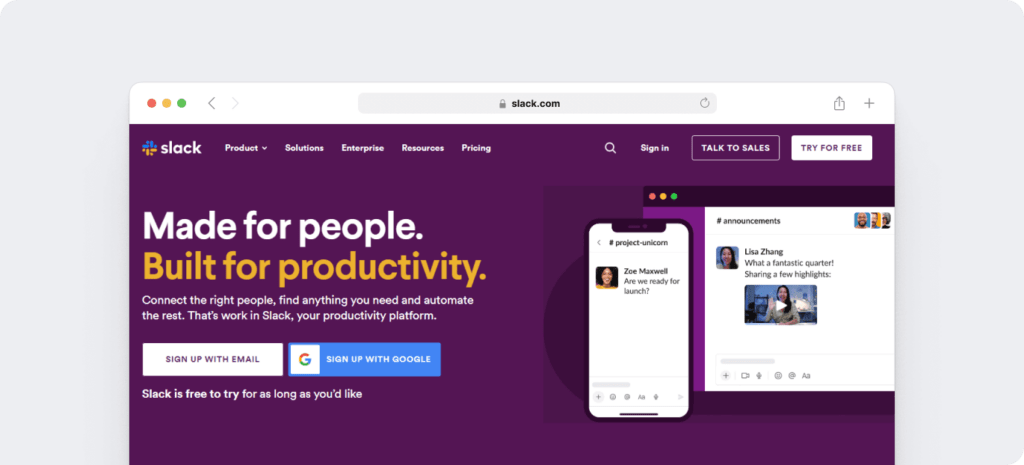
Strong communication is essential for remote work. Slack enables instant messaging, video calls, and team discussions, helping employees stay connected. It integrates with other work tools, allowing teams to manage conversations in one place.
4. Microsoft Teams – Great for virtual meetings and remote collaboration
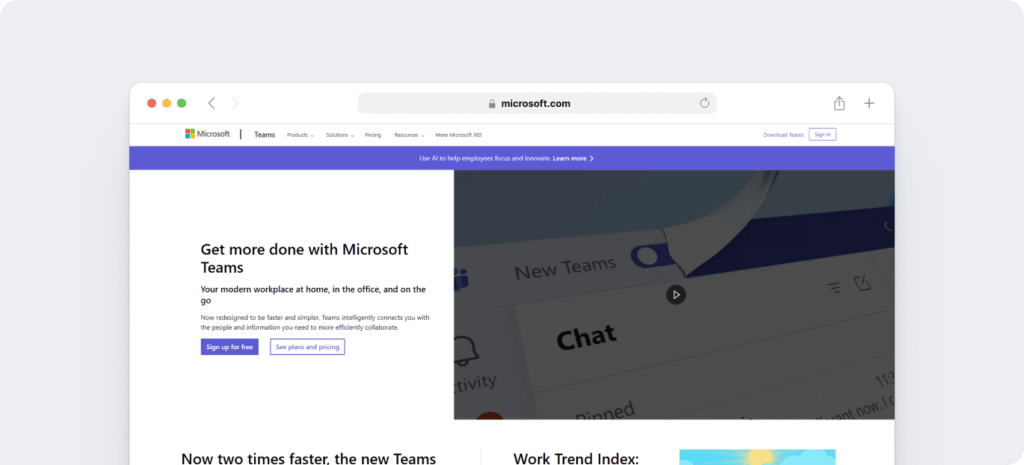
Microsoft Teams offers video conferencing, file sharing, and real-time collaboration for businesses that rely on virtual meetings. It helps teams conduct check-ins, review work, and stay engaged no matter where they are.
5. QuickBooks Time – Best for payroll and timesheet management
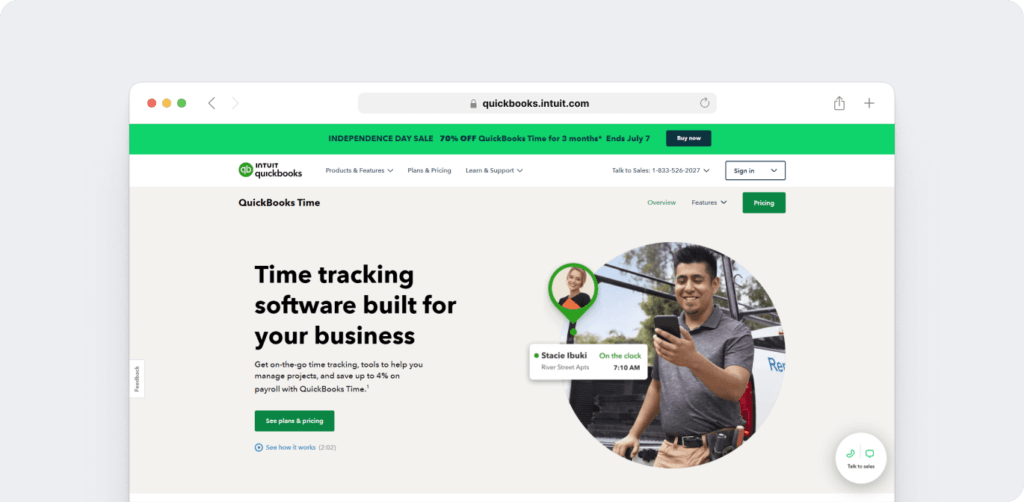
Payroll accuracy is essential for remote teams, and a monitoring solution helps ensure employees are compensated correctly. QuickBooks Time helps businesses track employee hours, generate timesheets, and automate payroll calculations to ensure employees are paid correctly.
6. Google Workspace – Best for document collaboration and productivity
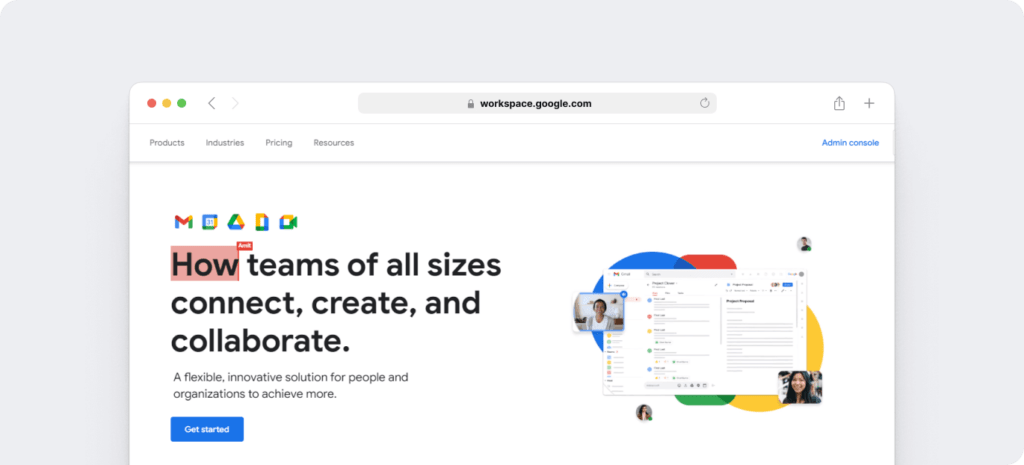
Remote teams need a central place to store and edit files. Google Workspace offers Google Docs, Sheets, and Drive, allowing teams to work on documents together in real time.
7. Zoom – Best for video conferencing and remote check-ins
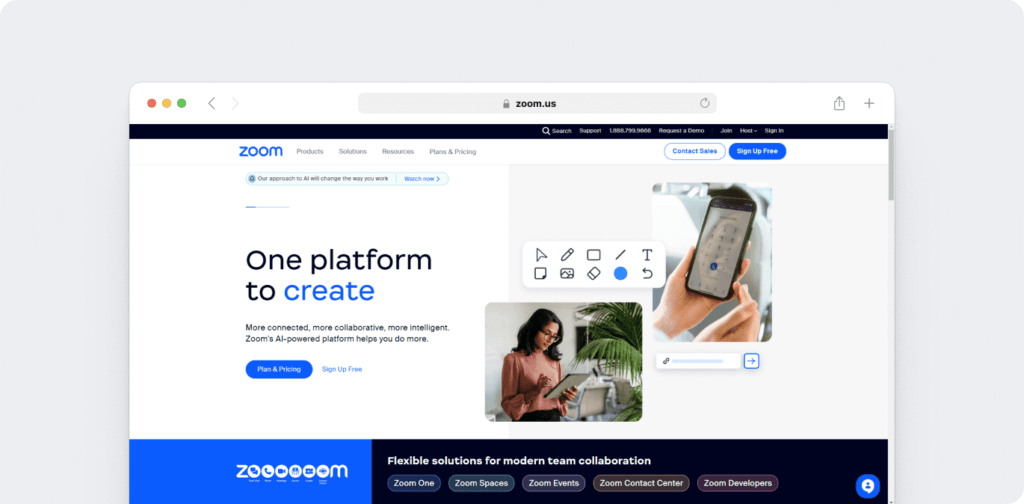
Regular check-ins help managers stay updated on progress. Zoom enables one-on-one meetings, team discussions, and virtual presentations, making communication more interactive.
Businesses can manage remote employee productivity by using a mix of monitoring software, task management tools, communication platforms, and payroll solutions.
The right tools create a structured, productive work environment while giving employees the freedom to work efficiently.
When you decide how to monitor employees working from home, choosing the right employee monitoring software is just as important as defining your workflow.
Below is a quick comparison of popular tools that help you manage remote and hybrid teams.
| Platform | Best for | Key capabilities | Privacy & compliance notes |
| Time Doctor | Workforce analytics with privacy controls | Time tracking, web & app usage, activity summaries, optional screenshots; attendance; role-based access | GDPR rights page; published HIPAA policies; screenshot blurring and access controls available. |
| Hubstaff | Time tracking with field visibility | Activity levels, GPS/location on mobile, payroll, broad integrations | GDPR page; enterprise materials reference HIPAA, GDPR, SOC 2. |
| Teramind | Advanced monitoring & insider-risk controls | Keystroke logging, screen recording, extensive user-activity monitoring, policy-based alerts | Emphasizes DLP/UEBA style features; supports privacy configuration options. |
| Insightful | Productivity monitoring for distributed teams | Time & attendance, app/website usage, configurable screenshots, screen monitoring | Security pages reference GDPR and SOC 2; KB and site mention HIPAA compliance. |
Final thoughts: Are you ready to improve how you monitor remote employees?
Managing a remote workforce involves more than monitoring work hours and employee activity. It involves creating a structured, productive, and accountable environment.
Do you have the right tools in place to support your team’s success?
The best employee monitoring software helps businesses track employee productivity, manage remote teams, and maintain transparency. With so many options available, how do you choose a solution that balances accountability and trust?
From healthcare to finance, choosing the right monitoring software isn’t just about tracking work. It’s about ensuring data protection, compliance, and trust at every level.
Time Doctor makes it easier to monitor remote employees, measure performance metrics, and streamline workforce management while respecting privacy.
Want to see how it works? Get a free demo of Time Doctor today and take the first step toward a more productive and efficient remote team.
Frequently asked questions (FAQs)
You can effectively monitor employees working from home by focusing on visibility rather than control. Start by setting clear expectations for work hours, deadlines, and communication.
Then, use employee monitoring software that provides real-time insights into employee activity and team productivity without being intrusive. The key is to build trust while maintaining accountability so your remote workforce stays aligned and productive.
The best productivity monitoring tools help you track time, focus, and output while supporting flexibility and privacy. Look for work-from-home monitoring software that includes time tracking, project management integrations, and workforce analytics dashboards.
A solution like Time Doctor gives you visibility into how your remote teams spend their work hours and helps you identify opportunities to optimize workflows without micromanaging.
Yes, employee monitoring software is legal and ethical when it is used transparently and responsibly. You should always inform your team about what is being tracked and explain that the goal is to improve team performance, not to invade privacy.
Ethical monitoring focuses on productivity analytics and data-driven coaching. In addition, compliance with GDPR or HIPAA regulations ensures that all work activities are monitored securely and fairly.
You should look for monitoring tools that improve employee productivity while respecting privacy. Some of the most important features include:
• Automated time tracking software for accurate work-hour reporting
• Privacy-focused monitoring with optional screenshots or blurred images
• GDPR-compliant monitoring solution for secure data handling
• Productivity dashboards that show real-time metrics
• Payroll and attendance integrations for seamless workforce management
• Workforce analytics to understand team performance trends
These features help you streamline operations, prevent burnout, and create a transparent work environment that supports both accountability and trust.
Yes, effective employee monitoring tools can strengthen regulatory compliance in industries such as banking, finance, and healthcare.
For example, features like audit trails, HIPAA-aligned data protection, and GDPR-compliant monitoring ensure that your sensitive information stays secure. By tracking user activity and maintaining detailed logs, you can meet strict industry regulations while keeping your distributed workforce safe and compliant.
When used responsibly, work monitoring tools can help you support employee engagement and reduce burnout.
By analyzing work hours, idle time, and app usage metrics, you can identify when team members are overworked or disengaged. This visibility allows you to adjust workloads, encourage regular breaks, and promote healthy work-life balance. As a result, your team becomes more focused, energized, and productive in the long term.
You can introduce employee monitoring software smoothly by communicating clearly and leading with transparency. Begin by explaining how the tool improves collaboration, data security, and employee performance.
Provide onboarding sessions that show how productivity analytics and real-time dashboards help employees highlight their achievements. When your team understands that the purpose is to support growth rather than control, adoption becomes easier and more positive.

Liam Martin is a serial entrepreneur, co-founder of Time Doctor, Staff.com, and the Running Remote Conference, and author of the Wall Street Journal bestseller, “Running Remote.” He advocates for remote work and helps businesses optimize their remote teams.

